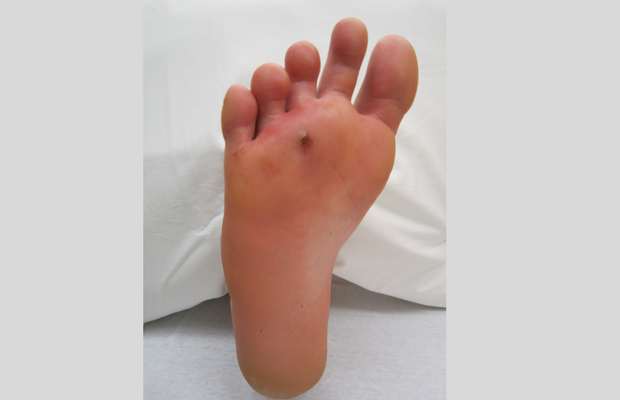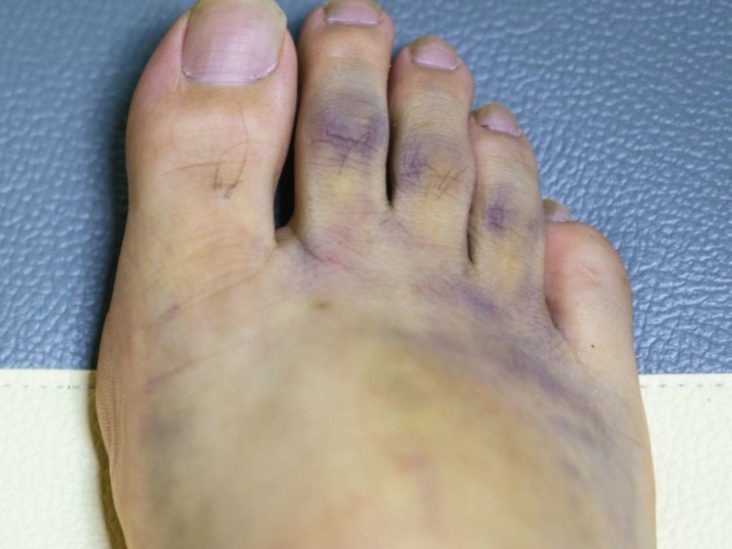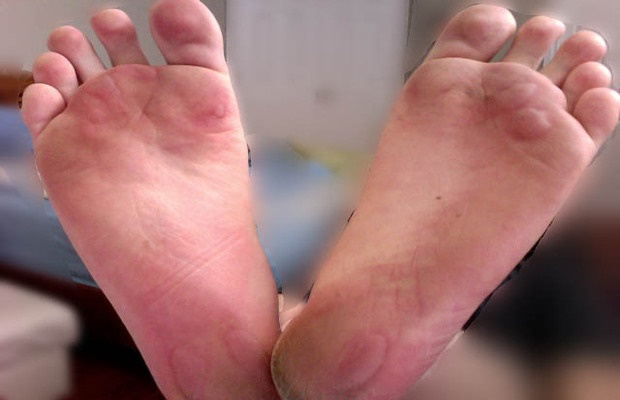Diabetes Brown Spots On Feet
Diabetes can cause a number of changes to the skin, including the development of brown spots on the feet. This is because diabetes can affect circulation, leading to poor blood flow to the feet. This can cause damage to the small blood vessels in the skin, leading to the formation of brown spots.
These brown spots, also known as diabetic dermopathy, are typically small, scaly, and slightly raised. They may be itchy, but they are usually not painful. They are most commonly found on the lower legs and feet, but they can also appear on the arms, hands, and face.
It's important to note that diabetic dermopathy is not harmful and not a sign of skin cancer. However, it is important to monitor any changes in the skin, especially if you have diabetes, as it could be an indication of poor blood sugar control or poor circulation.
If you have diabetes and notice brown spots on your feet, it's important to see a healthcare professional, who can assess your blood sugar levels and check for other signs of diabetes-related complications. They may also recommend measures to improve circulation and prevent further damage to the skin, such as keeping your blood sugar levels under control, managing your blood pressure, and taking care of your feet by keeping them clean and moisturized.
 Brown Speckles On Feet Type 2 Diabetes Forum The Global Diabetes Community
Brown Speckles On Feet Type 2 Diabetes Forum The Global Diabetes Community Read on to learn about diabetic blisters.
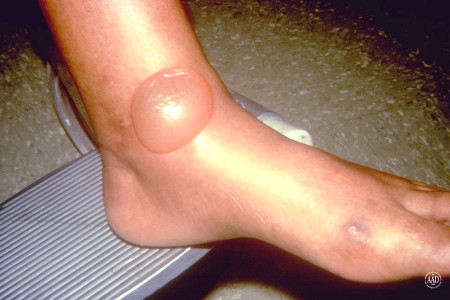
Diabetes brown spots on feet. Red brown spots on feet but no itching and pain it seems very bad. In the condition called diabetic dermopathy diabetes affects tiny blood vessels that supply a persons skin with blood. Young males with type 1 diabetes are particularly likely to get them.
Dermopathy most often appears as light brown scaly patches on the front of a persons legs according to the Cleveland clinic. Although rare diabetic bullae are a distinct marker for diabetes. They are prevalent between the ages of 17 and 84 years.
Foot infections are among the most common health complications in people with diabetes. This is more likely to happen if you've been told your level of risk for getting foot problems is high. The spots are often brown and cause no symptoms.
Diabetic dermopathy can also stay on the skin indefinitely. Reddish brown spots on the skin can be due to a variety. Having diabetes means that you're more at risk of serious foot problems and these can lead to amputation.
A serious foot problem is when damage to your foot means it needs emergency attention. These patches may be oval or circular. For these reasons many people mistake them for age spots.
Three skin conditions are likely to cause brown spots on the legs of a diabetic. We look at the reasons why. People with diabetes are prone to skin problems including blisters.
Unlike age spots these spots and lines usually start to fade after 18 to 24 months. Diabetic bullae also known as bullosis diabetic rum are blister like lesions that occur spontaneously on the feet and hands of diabetic patients. Learn about common types of diabetic foot problems and get tips on how to care for them.
Diabetic bullae are more common in men than women. This 55 year old man has had diabetes for many years. Answered by dr.
Uncontrolled diabetes can lead to breakouts of these pimply waxy bumps on your feet hands arms legs and butt. When a seemingly normal wound is left untreated it can become severely infected. Also known as shin spots the hallmark of diabetic dermopathy is light brown scaly patches of skin often occurring on the shins.
 Pictures Of Skin Problems Linked To Diabetes
Pictures Of Skin Problems Linked To Diabetes  Pictures Of Skin Problems Linked To Diabetes
Pictures Of Skin Problems Linked To Diabetes Type 2 Diabetes And Skin Pictures Dermopathy Infections And More
 What Are These Brown Spots On My Foot Medical
What Are These Brown Spots On My Foot Medical Type 2 Diabetes And Skin Health Which Skin Conditions Are Linked

Schamberg Disease Wikipedia.
Brown Spots On Legs Caused By Diabetes

Skin Manifestations Of Diabetes Mellitus Endotext Ncbi Bookshelf
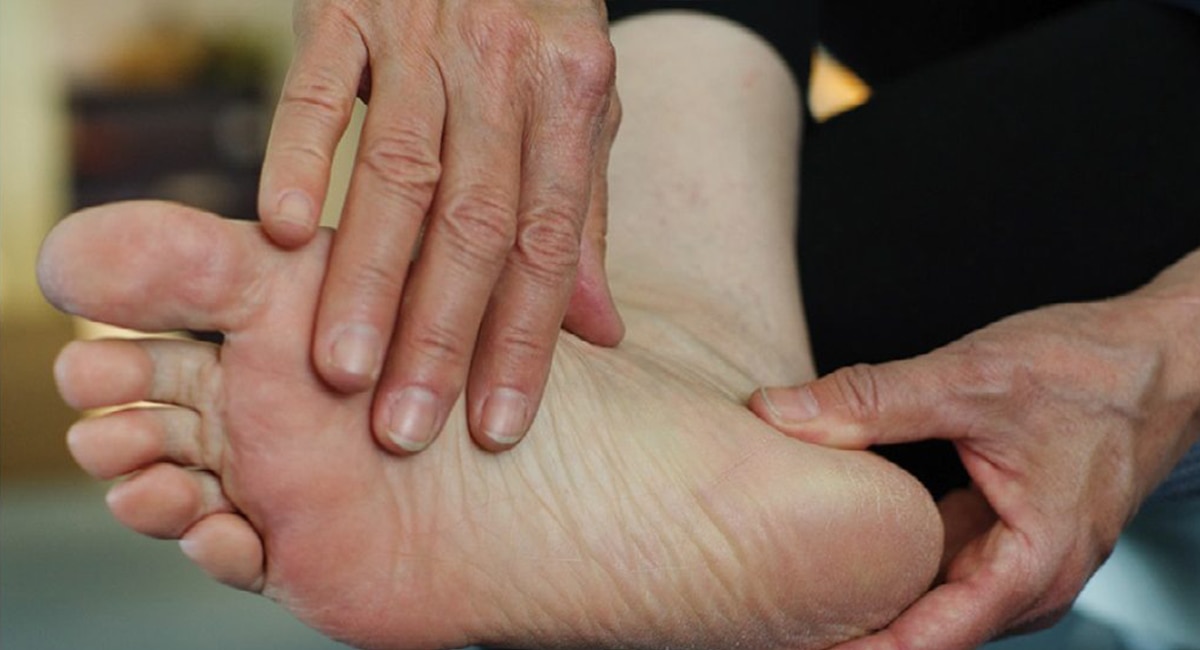 Diabetes And Foot Problems Niddk
Diabetes And Foot Problems Niddk
 Diabetes 12 Warning Signs That Appear On Your Skin
Diabetes 12 Warning Signs That Appear On Your Skin

10 Diabetic Skin Problems Everyday
Pictures Of Skin Problems Linked To Diabetes
 Small Brown Spots On The Lower Shins Clinical Advisor
Small Brown Spots On The Lower Shins Clinical Advisor
Diabetes Dark Spots Skin Diabetes Dark Spots
 Brown Spots On Legs Causes And Removal Guide Spots On Legs Remove Dark Spots Skin Spots
Brown Spots On Legs Causes And Removal Guide Spots On Legs Remove Dark Spots Skin Spots
Foot And Skin Related Problems Of Diabetes Acanthosis Nigricans Skin Dark Rings
Schamberg disease, also known as Schamberg's purpura or progressive pigmentary dermatosis, is a chronic skin condition characterized by small, red, brown or purple spots that appear on the lower legs, ankles, and feet. The condition is named after the American dermatologist who first described it in 1911, Dr. William Schamberg.
The exact cause of Schamberg disease is not well understood, but it is believed to be related to small blood vessel abnormalities in the skin. Some of the factors that are thought to contribute to the development of Schamberg disease include genetics, age, poor circulation, and certain underlying medical conditions such as diabetes, hypertension and liver disease.
Symptoms of Schamberg disease include small, red, brown or purple spots on the lower legs, ankles, and feet. The spots can be itchy, but they are usually not painful. They may also be accompanied by a burning or tingling sensation.
Treatment for Schamberg disease can include topical creams, oral medications, and laser therapy. In most cases, treatment is aimed at managing the symptoms, rather than curing the condition. With proper management, the condition does not usually lead to significant complications.
If you notice the symptoms of Schamberg disease, it is important to see a healthcare professional, especially if you have an underlying medical condition such as diabetes or hypertension. They can help to determine the cause of the condition and recommend appropriate treatment options.

Skin Manifestations Of Diabetes Mellitus Endotext Ncbi Bookshelf
 Diabetes And Foot Problems Niddk
Diabetes And Foot Problems Niddk  Diabetes 12 Warning Signs That Appear On Your Skin
Diabetes 12 Warning Signs That Appear On Your Skin 
A Guide To Skin Conditions Of The Diabetic Foot Podiatry
Diabetes can affect the feet in a number of ways, leading to a variety of skin conditions. Some common skin conditions of the diabetic foot include:
Diabetic dermopathy: This is characterized by small, scaly, and slightly raised brown spots on the legs and feet. It is caused by poor circulation and damage to small blood vessels in the skin.
Diabetic blisters: These are fluid-filled blisters that can form on the toes, feet, and legs. They are caused by friction and pressure on the skin, and are more common in people with diabetes who have poor circulation or neuropathy.
Diabetic foot ulcers: These are open sores that can occur on the feet, usually on the bottom of the foot. They are caused by poor circulation, neuropathy, and lack of sensation in the feet. They can lead to serious complications if left untreated.
Calluses and corns: These are thickened areas of skin that form as a result of pressure and friction on the skin. They are more common in people with diabetes who have poor circulation or neuropathy.
Athlete's foot: A fungal infection that causes itching, burning, and redness on the feet. It is more common in people with diabetes who have a weakened immune system.
Preventive measures to avoid these skin conditions would include regular foot care, such as keeping the feet clean and dry, wearing comfortable shoes, checking feet regularly for any changes, and controlling blood sugar levels. Podiatrist can be of great help in providing the best care for diabetic foot, by identifying potential problem areas, providing appropriate treatment, and providing education on preventive measures.
How Diabetes Can Affect Your Feet
Diabetes can affect the feet in a number of ways, leading to a variety of complications. Some of the ways diabetes can affect the feet include:
- Neuropathy: Diabetes can damage the nerves in the feet, leading to a loss of sensation. This can make it difficult to feel pain, temperature, or pressure, which can make it hard to detect injuries or blisters. This can also cause balance problems.
- Poor circulation: Diabetes can damage the small blood vessels in the feet, leading to poor circulation. This can slow down the healing process and make it more difficult for the body to fight off infections.
- Deformities: Diabetes can cause a number of foot deformities, such as hammertoes, bunions, and Charcot foot. These deformities can make it more difficult to wear shoes and walk, and can also increase the risk of foot injuries.
- Ulcers: People with diabetes are at a higher risk of developing foot ulcers, which are open sores that can occur on the feet. These ulcers can be caused by poor circulation, neuropathy, and deformities, and can lead to serious complications if left untreated.
- Increased risk of infection: People with diabetes are at a higher risk of developing infections in the feet, such as cellulitis, osteomyelitis, and gangrene. These infections can be caused by poor circulation and neuropathy, and can lead to amputation if left untreated.
To avoid these complications it is important for people with diabetes to take care of their feet by keeping them clean and dry, wearing comfortable shoes, checking feet regularly for any changes, and controlling blood sugar levels. Regular visits to a podiatrist is also important for monitoring and preventing any complications.
10 Diabetic Skin Problems Everyday
- Diabetic dermopathy: Small, scaly, and slightly raised brown spots on the legs and feet caused by poor circulation and damage to small blood vessels in the skin.
- Diabetic blisters: Fluid-filled blisters that can form on the toes, feet, and legs caused by friction and pressure on the skin, and are more common in people with diabetes who have poor circulation or neuropathy.
- Diabetic foot ulcers: Open sores that can occur on the feet, usually on the bottom of the foot caused by poor circulation, neuropathy, and lack of sensation in the feet.
- Calluses and corns: Thickened areas of skin that form as a result of pressure and friction on the skin, more common in people with diabetes who have poor circulation or neuropathy.
- Athlete's foot: A fungal infection that causes itching, burning, and redness on the feet, more common in people with diabetes who have a weakened immune system.
- Necrobiosis lipoidica diabeticorum: Shiny, yellow-brown patches that develop on the legs.
- Diabetic bullae: Large fluid-filled blisters that can occur on the legs, feet, and toes.
- Eruptive xanthomatosis: Red, raised bumps filled with fatty deposits that can occur on the feet, legs, and hands.
- Acanthosis nigricans: Dark, thickened patches of skin that occur in the armpits, groin, and neck.
- Digital sclerosis: A thickening and tightening of the skin on the hands and feet caused by an accumulation of collagen.
It is important for people with diabetes to be aware of these skin problems, and to take care of their feet by keeping them clean and dry, wearing comfortable shoes, checking feet regularly for any changes, and controlling blood sugar levels. Regular visits to a podiatrist is also important for monitoring and preventing any complications.
Pictures Of Skin Problems Linked To Diabetes
 Small Brown Spots On The Lower Shins Clinical Advisor
Small Brown Spots On The Lower Shins Clinical Advisor Diabetes Dark Spots Skin Diabetes Dark Spots
 Brown Spots On Legs Causes And Removal Guide Spots On Legs Remove Dark Spots Skin Spots
Brown Spots On Legs Causes And Removal Guide Spots On Legs Remove Dark Spots Skin Spots Purple Feet Causes And Treatment
Purple feet, also known as cyanosis, is a condition where the skin on the feet appears blue or purple due to a lack of oxygen in the blood. This can be caused by a number of factors, including:
- Peripheral artery disease (PAD): A condition where the arteries in the legs become narrowed or blocked, reducing blood flow to the feet.
- Deep vein thrombosis (DVT): A blood clot that forms in the deep veins of the legs, blocking blood flow and causing the skin to turn purple.
- Raynaud's disease: A condition where the blood vessels in the feet and toes constrict in response to cold temperatures or stress, reducing blood flow and causing the skin to turn purple.
- Septicemia: A serious bacterial infection that spreads through the bloodstream and can cause the skin to turn purple.
- Anemia: A condition where the body lacks enough red blood cells to carry oxygen throughout the body, which can cause the skin to turn purple.
- Heart failure: The heart pumps less blood than it needs, leading to a drop in blood pressure and reduced blood flow to the feet.
Treatment for purple feet will depend on the underlying cause. In most cases, it will involve addressing the underlying condition, such as treating PAD or DVT, managing anemia, addressing septicemia, and managing heart failure. If a person has purple feet, they should seek medical attention in order to rule out any serious underlying conditions.
Foot And Skin Related Problems Of Diabetes Acanthosis Nigricans Skin Dark Rings
Acanthosis nigricans is a skin condition that is often associated with diabetes. It is characterized by dark, thickened patches of skin that typically occur in the armpits, groin, and neck. This condition is caused by an overproduction of skin cells and an increase in the amount of melanin (pigment) in the skin.
In people with diabetes, acanthosis nigricans is often related to high levels of insulin in the blood. This can happen in both type 1 and type 2 diabetes, but it is more common in people with type 2 diabetes. The high levels of insulin can cause the body to produce too much skin cells and melanin, leading to the formation of the dark, thickened patches.
Acanthosis nigricans can also be caused by other underlying medical conditions, such as obesity, hormonal imbalances, and certain medications.
Treatment for acanthosis nigricans includes controlling blood sugar levels, losing weight if you are overweight, avoiding tight clothing that rubs against the affected areas of skin, and use of topical creams and ointments to lighten the skin. In some cases, a dermatologist may also prescribe an oral medication to help reduce the production of skin cells and melanin.
It is important for people with diabetes to be aware of this skin condition, and to take care of their feet by keeping them clean and dry, wearing comfortable shoes, checking feet regularly for any changes, and controlling blood sugar levels. Regular visits to a dermatologist and/or podiatrist is also important for monitoring and preventing any complications.


